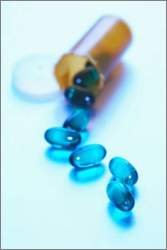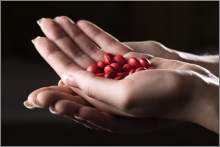Six Ways to Make Sure Your Generic Drugs are Safe
by www.SixWise.com
They can save you some money, and they're the same as pricier brand-name varieties, so why not use a generic drug if you can get it, right?
Maybe not.
|

Generic drugs can cost up to 80 percent less ... but some people believe they don't always measure up.
|
Although most people are happy to switch to generics -- 1 billion such prescriptions are filled every year in the United States -- and sometimes insurance companies or Medicare actually require it, a study this year uncovered some inconsistencies.
Are Generic Drugs the Same as Brand-Name?
Generic drugs must have the same active ingredient as brand-name drugs, and although they may look different and contain different fillers, the U.S. Food and Drug Administration (FDA) maintains they are identical in effectiveness.
According to the FDA, "A generic drug is identical, or bioequivalent to a brand name drug in dosage form, safety, strength, route of administration, quality, performance characteristics and intended use."
Meanwhile, generics cost anywhere from 30 percent to 80 percent less than their brand-name counterparts. This amounts to a savings of $8 billion to $10 billion a year for U.S. consumers shopping at retail pharmacies, according to the Congressional Budget Office.
Sounds good, yes?
But the people at Prevention magazine found something different. Some people experienced wildly different results when switching from a brand-name drug to a generic, so Prevention commissioned ConsumerLab.com to do some digging.
|

One study found that a generic antidepressant released the active ingredient much faster than the name-brand did.
|
The lab tested the antidepressant Wellbutrin along with three generics. While two of the three were roughly comparable, the third, Budeprion XL 300, was not.
Specifically, Budeprion released the active ingredient very quickly -- 34 percent in the first two hours versus 8 percent for Wellbutrin. This means that people taking the generic are hit with a large dose of the drug right up front, and later may not have much circulating at all.
"That's a huge difference for a drug like this, and could make switching from one formulation to the other a problem," Ray Woosley, MD, PhD., president and chairman of the board of the nonprofit Critical Path Institute, told Prevention.
How to Make Sure Your Generic Drugs are Safe
Prevention magazine listed several critical tips to make sure switching to a generic drug is safe for you.
|
Need to Know Exactly What's in Your Food? Get The Food Allergy Survival Guide Book!
 For a complete guide on how to eat if you have food allergies and intolerances, check out the highly recommended Food Allergy Survival Guide Book. In it you'll learn: For a complete guide on how to eat if you have food allergies and intolerances, check out the highly recommended Food Allergy Survival Guide Book. In it you'll learn:
-
How to avoid the foods and ingredients that trigger reactions
-
How to substitute healthful ingredients for those that trigger allergic responses
-
How to meet recommended nutrient intakes while avoiding trigger foods such as dairy products, eggs, gluten-containing grains such as wheat, or other food culprits
-
How to determine which food(s) may be triggers for your symptoms ... and much more!
Find out More About The Food Allergy Survival Guide Book Now!
|
-
If the drug has a "narrow therapeutic index," stick with brand-name. Narrow therapeutic index, or NTI, means that the dose needed for the drug to be effective is very close to the dose that can cause side effects. Ask your doctor to find out your prescription's NTI.
-
Pay attention. Monitor both your progress and how you feel. If necessary, keep a journal tracking side effects, mood swings, blood pressure, blood sugar, etc.
-
Use a "drug challenge." If the generic doesn't seem right, switch back to the brand-name for a month, then try the generic again. This may get your insurance company to charge you less for your brand-name copay. You can also have your doctor tell your insurance company why you need the name-brand version.
-
Find out the manufacturer. Sometimes generics made from a certain manufacturer will work better for you. In case your pharmacy switches, know which one you prefer and shop around to find it.
-
Try a different version. Switching from a once-a-day drug to a version you take twice a day may work better, for instance.
-
Report any problems. You can report them to the FDA, which is supposed to investigate, or to Prevention's site, peoplespharmacy.com.
Again, according to the FDA, a generic drug must:
-
Contain the same active ingredients as the innovator drug (inactive ingredients may vary)
-
Be identical in strength, dosage form, and route of administration
-
Have the same use indications
-
Be bioequivalent
-
Meet the same batch requirements for identity, strength, purity, and quality
-
Be manufactured under the same strict standards of FDA's good manufacturing practice regulations required for innovator products
Still, slight variations may make all the difference in how you feel. Listen to your body, and if you suspect something has changed talk to your doctor right away.
Recommended Reading
How Many Drugs are Actually Counterfeit? What is Being Done?
The Five Most Dangerous Medicine Mistakes that Way Too Many People Make
Sources
Prevention.com February 2008
FDA: Office of Generic Drugs